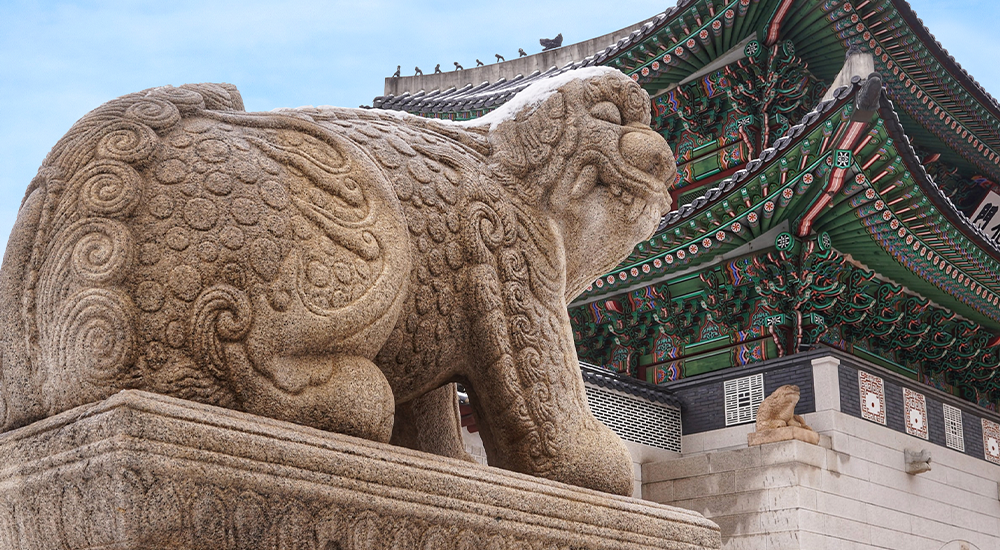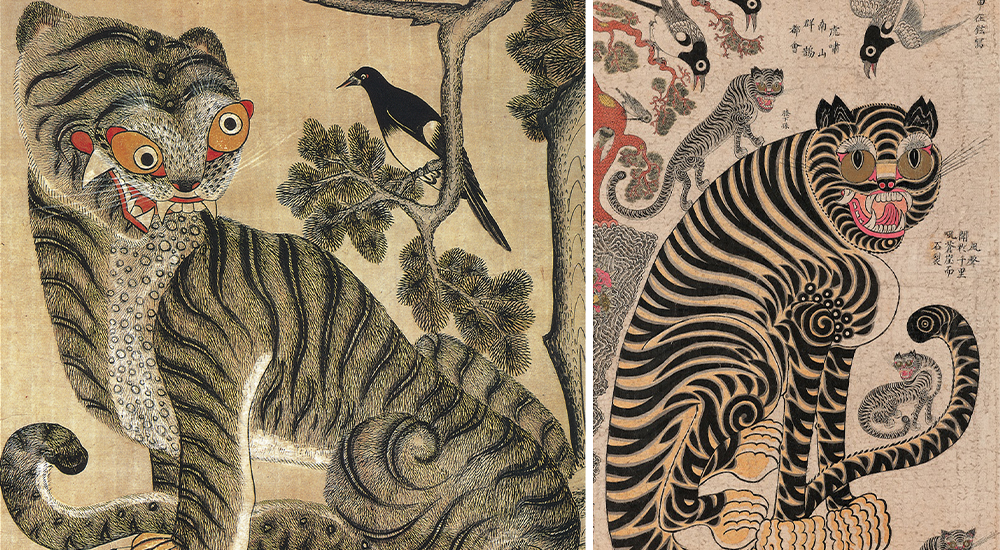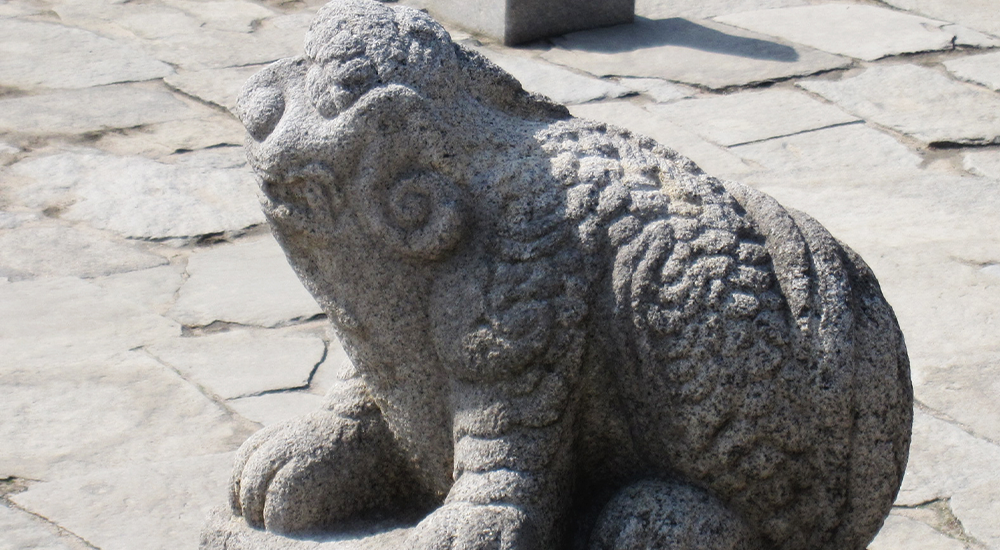
The historical origin of shamanism, a spiritual tendency by which the formation of Korean culture has been profoundly influenced, is murky. Its practitioners and shamans depend on spiritual forces to try to overcome and determine current difficulties pertaining to humanity’s fortunes. They also try to attain a state in which they are possessed by a spirit and hope to ward off evil spirits using shamanic instruments and colorful shamanic paintings in combination with animalism.
Korean mid-career ceramic artist Jang Mee Kyung’s works breathe new life into such aspects of Korean culture in an interesting way using a reduced form of art: ceramics with age-old traditions. Inspired by traditional articles such as the stone statues of the 12 zodiac animals on the lunar platform of Geunjeongjeon (a throne hall) in Gyeongbokgung, the main royal palace of the Joseon Dynasty, traditional decorative coloring (dancheong), and wooden figures for funeral biers (kkokdu), Jang’s ceramic figures embedded with heavy, intense primary color sensations seem to bring forth spiritual energy with figures of animals like tigers and chickens. As if we are seeing shamanic paintings by a shaman or folk paintings by unknown ordinary painters for the first time, we immediately become riveted by this mythical world the moment we see her pieces.
This “humanistic familiarity” derives from the spread of bright energy alongside the beauty of her ceramics’ humorous forms. A sunny place laden with vitality seems to suit her ceramics more than a dark, damp basement even though they are symbolic objects with the significance of warding off evil spirits. Often going by the title Auspicious Form, her ceramic exhibitions have featured her ceramics imbued with spirituality and warding off darkness and death. In particular, her ceramic world features personified spiritual creatures laden with bright images of life.




